
Prince Aly Salomone Khan, known as Aly Khan, was a socialite and ambassador for Pakistan. He was the son of the Aga Khan III, and the father of Aga Khan IV.
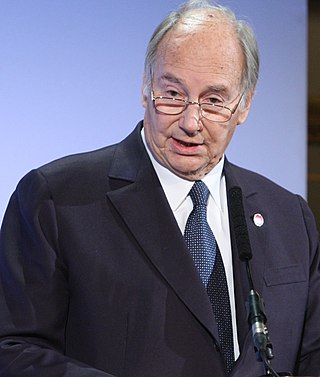
Aga Khan is a title held by the Imām of the Nizari Ismāʿīli Shias. Since 1957, the holder of the title has been the 49th Imām, Prince Shah Karim al-Husseini, Aga Khan IV. Aga Khan claims to be a direct descendant of Muhammad, the last prophet according to the religion of Islam.

Shah Karim al-Husayni (Arabic: شاه كريم الحسيني, romanized: Shāh Karīm al-Ḥusaynī; born 13 December 1936; known as Aga Khan IV is the 49th and current imam of Nizari Isma'ilis. He has held the position of Imam and the title of Aga Khan since 11 July 1957 when, at the age of 20, he succeeded his grandfather, Aga Khan III. The Aga Khan claims direct lineal descent from the Islamic prophet Muhammad through Muhammad's cousin and son-in-law, Ali, who is considered an Imam by Nizari Isma'ilis, and Ali's wife Fatima, Muhammad's daughter from his first marriage. Aga Khan IV is also known by the religious title Mawlānā Hazar Imam by his Isma'ili followers.

A caravanserai was a roadside inn where travelers (caravaners) could rest and recover from the day's journey. Caravanserais supported the flow of commerce, information and people across the network of trade routes covering Asia, North Africa and Southeast Europe, most notably the Silk Road. Often located along rural roads in the countryside, urban versions of caravanserais were also historically common in cities throughout the Islamic world, and were often called other names such as khan, wikala, or funduq.

The Aga Khan Award for Architecture (AKAA) is an architectural prize established by Aga Khan IV in 1977. It aims to identify and reward architectural concepts that successfully address the needs and aspirations of Muslim societies in the fields of contemporary design, social housing, community development and improvement, restoration, reuse and area conservation, as well as landscape design and improvement of the environment.

Jamatkhana or Jamat Khana is an amalgamation derived from the Arabic word jama‘a (gathering) and the Persian word khana. It is a term used by some Muslim communities around the world, particularly sufi ones, to a place of gathering. Among some communities of Muslims, the term is often used interchangeably with the Arabic word musallah. The Nizārī Ismā'īlī community uses the term Jama'at Khana to denote their places of worship.

Kashan is a city in the Central District of Kashan County, in the northern part of Isfahan province, Iran, serving as capital of both the county and the district.

Aga Khan University is a not-for-profit institution and an agency of the Aga Khan Development Network. It was founded in 1983 as Pakistan's first private university. Starting in 2000, the university expanded to Kenya, Tanzania, Uganda, the United Kingdom and Afghanistan.
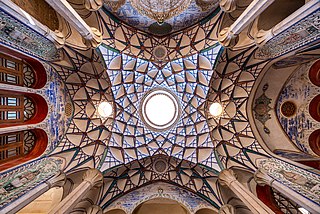
The Borujerdi House is a historic house museum in Kashan, Iran. It was built in 1857 by architect Ustad Ali Maryam for the bride of Borujerdi, a wealthy merchant. The bride came from the affluent Tabātabāei family, for whom the architect had built the nearby Tabātabāei House several years earlier.
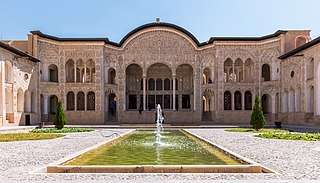
The Tabatabai House is a historic house museum in Kashan, Iran. It was built around 1880, during the reign of the Qajar dynasty, for the affluent Tabātabāei family. It is one of the prominent historic houses of Kashan and Iran, together with the Āmeri House, the Borujerdi House, and others.
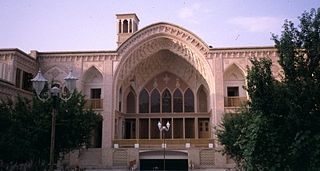
The Āmeris House is a large historic house in Kashan, Iran. It was originally built as a family residence during the reign of the Zand dynasty for Agha Āmeri, the governor of Kashan, and is now restored and transformed into a traditional-style hotel.
Serena Hotels is a hospitality company which operates up-scale hotels and resorts in East Africa, Southern Africa and South Asia.

Kashan County is in Isfahan province, Iran. Its capital is the city of Kashan.
Alí Manuel Manouchehri Moghadam Kashan Lobos, known as Alí Manouchehri, is a Chilean retired footballer who played as a centre back and a full back.
Sepidrood Rasht Sport Club is an Iranian football club based in Rasht, Iran. They currently compete in League 2.
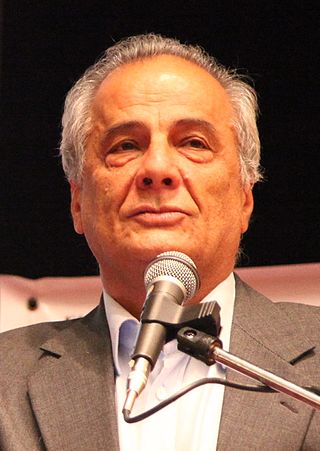
Modjtaba Sadria is an Iranian-born philosopher, socio-cultural theorist and international social policy development specialist. Professor Sadria has particular expertise in cross-cultural relations and East Asian studies. He has published many books and articles, including: "Global Civil Society and Ethics: Finding Common Ground", "People Who Live on the Edge of the World", "Realism: Trap of International Relations", and "Prayer for Lost Objects: A Non-Weberian Approach to the Birth of Modern Society" . He has been the head of «Think Tank for Knowledge Excellence» since 2009, in Tehran, Iran. He has been scientific consultant in Denmark Nomad Academy, since summer 2011.

Sar is a village in Kuh Dasht Rural District, Neyasar District, Kashan County, Isfahan Province, Iran. At the 2014 census, its population was 850 in summer and 150 in winter, in 210 families.

The Jalali Castle is located in Kashan, Iran.
Manouchehri is an Iranian surname. Notable people with the surname include:
The city of Kashan in Iran was struck by a major earthquake just before dawn on 15 December 1778. The earthquake had an estimated magnitude of 6.2 . There was widespread damage in the area around the city, with most buildings destroyed. More than 8,000 people were killed.
















